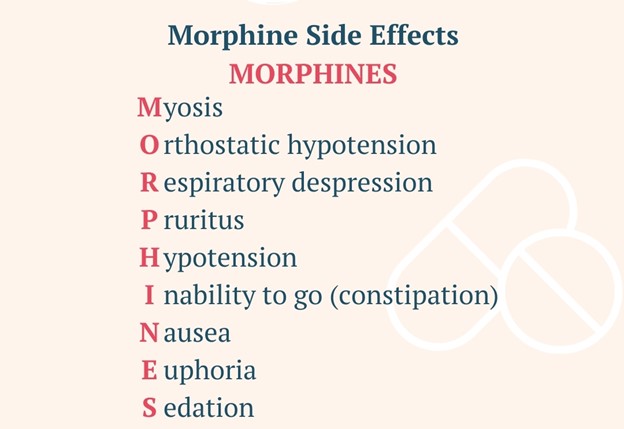A nurse is teaching a client who has a prescription for ferrous gluconate. Which of the following statements by the client indicates an understanding of the teaching?
"I should stay upright for at least 15 minutes after taking this medication."
"I should take this medication with 8 ounces of milk."
"I should take an antacid with this medication to prevent stomach upset."
"I should notify my provider if my stools turn black.
The Correct Answer is D
A. "I should stay upright for at least 15 minutes after taking this medication.": This advice is usually given with medications like bisphosphonates to prevent esophageal irritation. It is not necessary for ferrous gluconate.
B. "I should take this medication with 8 ounces of milk.": Iron supplements should not be taken with milk or other dairy products because they can interfere with iron absorption.
C. "I should take an antacid with this medication to prevent stomach upset.": Antacids can also interfere with iron absorption and should be taken separately from iron supplements.
D. "I should notify my provider if my stools turn black."
Ferrous gluconate is an iron supplement used to treat iron deficiency anemia. One common side effect of iron supplementation is the darkening of stools, often to a black color. This is not harmful but is important for the client to be aware of. It is due to the reaction of iron with the acids and enzymes in the gastrointestinal tract.
Nursing Test Bank
Naxlex Comprehensive Predictor Exams
Related Questions
Correct Answer is A
Explanation
A. Increased respiratory rate.
Naloxone is an opioid receptor antagonist used to reverse the effects of opioids like morphine. When administered to a client who has developed an adverse reaction to morphine, naloxone can rapidly reverse the effects of opioid overdose, including respiratory depression. Therefore, an increased respiratory rate is a therapeutic effect of naloxone, as it helps restore normal breathing patterns in clients who are experiencing respiratory depression due to opioid overdose.
B. Decreased blood pressure: Naloxone is not primarily used to affect blood pressure. Its primary goal is to reverse opioid overdose effects, particularly respiratory depression.
C. Increased pain relief: Naloxone does not directly increase pain relief. Its primary action is to reverse the effects of opioids at the receptor sites, which can also lead to the reduction of pain relief provided by opioids. However, its main role is the reversal of opioid overdose effects, not enhancing pain relief.
D. Decreased nausea: Nausea is a common side effect of opioid use. While naloxone can help reverse opioid overdose effects, it does not necessarily directly address nausea. Its main purpose is to restore normal respiratory function in cases of opioid overdose.

Correct Answer is C
Explanation
A. Naloxone IV:
This choice is incorrect. Naloxone is an opioid receptor antagonist used to reverse the effects of opioid overdose. It works by displacing opioids from the receptors and rapidly reversing their effects. However, in this scenario, the client is experiencing pain 1 hour after receiving morphine, indicating that the morphine's analgesic effects have likely worn off. Naloxone is not used to manage pain, but rather to reverse opioid overdose.
B. Fentanyl transmucosal:
This choice is incorrect. Fentanyl transmucosal formulations are used for breakthrough pain in opioid-tolerant patients with chronic pain conditions. It is not typically the first choice for immediate pain relief after intravenous morphine administration. Additionally, it's worth noting that fentanyl transmucosal products, like fentanyl lollipops, are usually reserved for chronic pain management and may not be suitable for immediate post-administration pain relief.
C. Morphine tablet:
This is the correct choice. If the client is experiencing pain 1 hour after receiving morphine intravenously, it's reasonable to administer an oral or sublingual form of morphine for continued pain relief. Morphine tablets are commonly used for pain management and can provide sustained relief over a longer duration. This choice aligns with the patient's initial prescription for pain control.
D. Lidocaine patch:
This choice is incorrect. Lidocaine patches are used to manage localized neuropathic pain, such as postherpetic neuralgia. They work by numbing the skin and underlying tissues in the area where they are applied. While lidocaine patches can be effective for certain types of pain, they are not typically used to address the acute pain associated with cancer and immediate post-administration pain relief.
Whether you are a student looking to ace your exams or a practicing nurse seeking to enhance your expertise , our nursing education contents will empower you with the confidence and competence to make a difference in the lives of patients and become a respected leader in the healthcare field.
Visit Naxlex, invest in your future and unlock endless possibilities with our unparalleled nursing education contents today
Report Wrong Answer on the Current Question
Do you disagree with the answer? If yes, what is your expected answer? Explain.
Kindly be descriptive with the issue you are facing.
